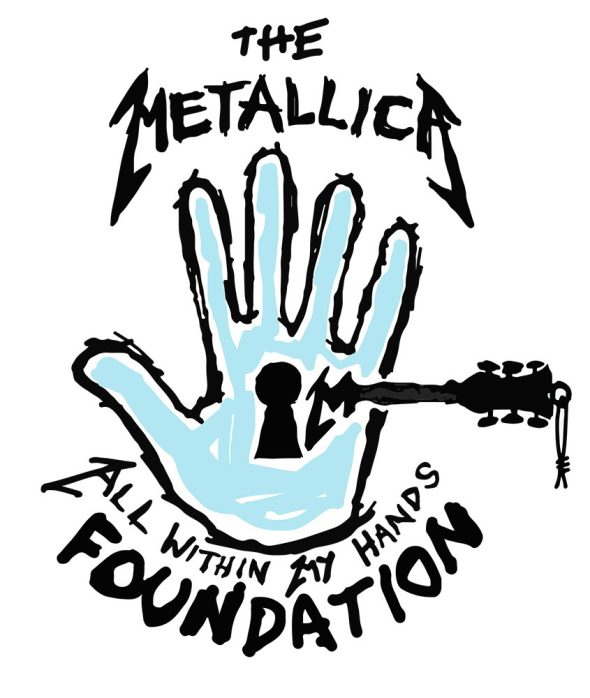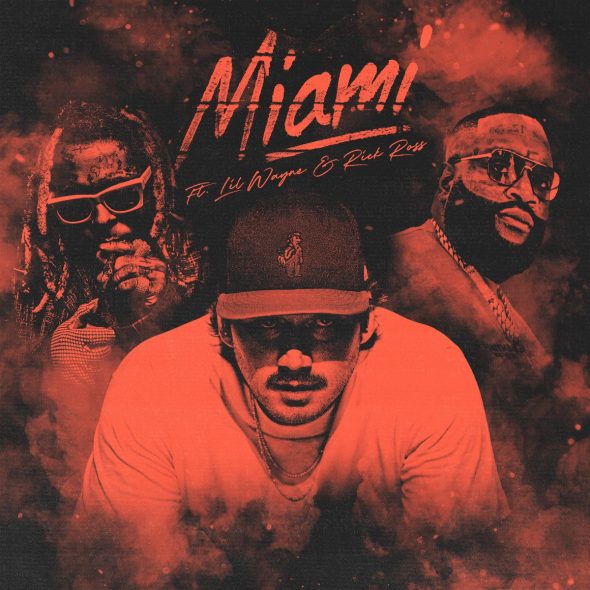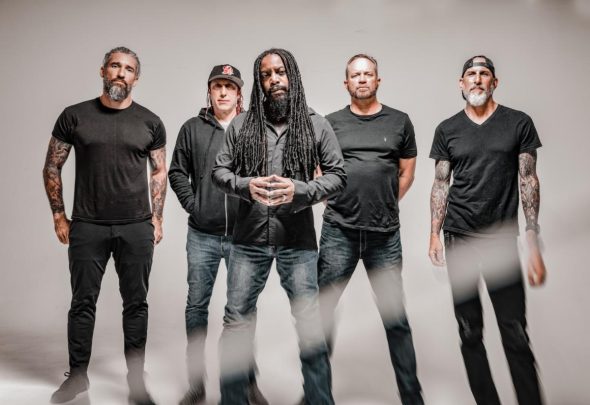1993 was a pivotal year in my life. I was about to get married, and I had been working as an apprentice to Senior Master Builder Roger Giffin at the Gibson West Custom Shop. Gibson was going through some restructuring which was soon going to change to my latitude. Little did I realize the magnitude of what was about to unfold, and how it would alter my career for life.

So its 1993 and I’m working for the Gibson West Custom Shop located in Burbank CA based out of what used to be the Tobias bass guitar factory which Gibson had recently purchased the brand and relocated its factory to Nashville. They still had a lease on the facility so they moved Roger Giffin and me into the building as we moved out of a larger facility that used to include Oberheim, Gibson Labs, Gibson Artist Relations and the Gibson West Custom Shop.
We were a small, two-man team and worked on any instrument that walked in the door, as well as specializing in Gibson Warranty Repairs, as well as limited custom building of Gibson models. We catered primarily to the working professionals in the LA area — everyone from studio musicians, touring acts, to the local musicians. What made this job really interesting was that we’d see a lot of vintage guitars that I found a real treat and rare occurrence compared to prior repair shops I had worked in. Because of this, we would often contact the manufactures directly for parts we would need to maintain and restore some of these instruments.
The Fender Custom Shop became a recurring phone number, and was in its earliest form of growth as the “Dream Team” was starting to take shape. Ralph Esposito was my main contact at the time, so as things were evolving with the Gibson restructure, I took it upon myself to investigate other opportunities as I was embarking on my first marriage, and I wasn’t real sure about my job security, nor did I wish to relocate to Nashville, which was an offer to continue my Gibson employment.
Ralph mentioned they were looking for some quality help so they invited both Roger and I out for an interview. I was offered a position that began in what was the custom shop’s sand and buff department, working on the set neck models they were producing. The shop was constantly in a form of construction and re-organization; extension cords all over as various departments were literally being built all around us. The shop at the time consisted of about 30 people and grew to approximately 65 by the time I left the company January 1999.
The shop had an artisan feel to it, as if a variety of businesses were all operating under one roof. There was the Team Built crew, which was comprised of a group of apprentices which were closely watched over by the master builders to maintain quality control and authenticity of detail that supported the Fender tradition. Many of these apprentices were hand selected from the Fender production line for their acquired skill sets and overall Fender product knowledge. Master Builders were the wild bunch, and each builder would operate as a single man team building one guitar at a time for a specific order to guarantee the highest end user results in getting them the dream guitar they had envisioned.
The day of a Master Builder would often begin around the coffee pot discussing guitar repair horror stories or the weekend’s review of gigs and concerts, as many builders and employees were also working musicians. A quick stop in to greet the custom shop salesmen, John Grunder and Mark Duncan to help verify if an order could be built, and who may be the best builder to assign the project to, or a reality price check on a task that was very out of the normal routine.
Each builder would be assigned a short list of guitars to build. The builder would call each customer prior to beginning their order to verify the order was correct, as well as to get a feel for the person and any details that would truly help the builder home in on the importance of the smallest of details that could translate into the biggest wow factor for the pending owner. This always helped create a friendship between the builder, dealer, and customer which, for some would spark friendships that would last a lifetime.
The next stop would be the wood mill, where we would hand select raw wood to cut a guitar from scratch. Custom orders would run the gambit from simple to extremely complicated, sometimes recreating a vintage model or creating entirely new models, allowing the end user to run wild with their imagination. “If it could be dreamed up and put on paper then it could be built” was the concept. The lumber mill for Fender was the equivalent of Fort Knox, with countless boards of lumber prepped and palatalized for use, from Swamp Ash and Alder to highly figured flame or bird’s eye maple, all screaming for your attention to become someone’s guitar.
The beauty in the shop very much rested on the shoulders of John Page, who was the general manager of the custom shop. He had a very strong knack for knowing what the “Cool Factor” was, and he was responsible for everything from designing to pairing various products together into limited run sets for some unparalleled craftsmanship of product offerings that often sold through dealers for more than the suggested MSRP retail price. John also had a way with his employees that was comparable to the comedian Sam Kennison — loud, proud, obnoxious, and with an attitude that would bust your balls, then give you a big hug on the way out the door, which instilled an ownership in everything we did. Some days would be like the “Thrill of Victory to the Agony of Defeat,” or as George Blanda, Jr. may note, it was the “Animal House” of guitar building. There were constant practical jokes being played on people and initiations that you were not informed of until the joke was already on you. There are stories I still repeat to this day with a big smile.
I arrived in what is referred to as the second phase of hiring master builders. I came on board without a lot of history to my skills, so I was in a proving ground. The first few months I simply sanded and buffed guitars and would bring in some side projects after hours that really seemed to get people’s attention and also show them that I was a pretty serious guitar junkie. Meanwhile, Steve Stern was starting to create what became the Carve Top division of the Custom Shop, where he would make D’Aquisto arch tops, and where I would get my first real task of guitar building under the Robben Ford signature line. I was already a fan of Robben Ford, having seen him while attending the Guitar Institute of Technology, GIT. I was to create, with Robben’s involvement, what was to become the Custom Shop’s version of his signature model. After about 6 months of building a variety of ideas, Robben zoomed in on three models that would outline his signature model. Just having the ear of an artist of Robben’s caliber to bounce ideas off of was a dream in itself.
J.W. Black, who was a Senior Master Builder at the time, was responsible for scouting talent throughout the company and helping bring them up through the ranks. Jay was keenly surprised when he saw the first few batches of Robben Ford models making their way through production, and was very impressed with my chops. Jay was one of the more serious builders in the shop, who always had Fenders best interest in mind; he didn’t mess around much and was very skilled at pin-point accuracy in his vision as to how things should play out. I was 27 years old when I started, and I became the youngest Master Builder to be chosen less than a year after my employment date. So, Jay asked me if I would be interested in becoming a Master Builder, as the Robben Ford model was still considered a Masters Apprentice position where you needed Master results. I was like, “Yeah! How could I not?” Granted, the Robben Ford model was a completely hand built instrument with no CNC support, so everything you did you made yourself, which was a perfect launch pad into becoming a Master Builder.
A few years go by, and Jay hits me up again to see if I would be interested in a Senior Master Builder position. Again, I say, “Ah, yeah!” The main difference there is you help manage other Master Builders as well as manage a crew of Master Apprentices who are then getting more involved with new product releases and artist signature model development. I have always been very easy going, so I found it to be a lot of fun networking with the Master Builder crew, assigning orders to them, which was as simple as “What do you wanna build?” and assigning tasks accordingly.
Finally, the day came when John Page left the Custom Shop. To me, it was a sign to spread my wings and try my own hand at entering the guitar world on my own name. Be careful what you wish for. I am forever grateful to the people that helped the world take notice of my accomplishments while at Fender — everyone from music magazines, dealers, to end users and artists. Thankfully, the skills I have acquired have allowed me to enjoy and cater to the guitar industry — to put my own stamp on guitars that bear my name. It hasn’t been easy, yet it has been a lifelong labor of love. Coupled with that, being a very active live performing musician as well, which fits hand in hand.
So, thirty years later we’re, now at the feet of the 30th Anniversary of the Fender Custom Shop. I got a call from Mike Lewis, VP of Product Development, Fender Custom Shop, asking me if I would like to help get the band back together. I was like, “What you talkin’ about Lewis?” He elaborated, laying out their vision of what they want the anniversary to be, which completely blindsided me as he lays out the plan.
Fender doesn’t need us, the original Master Built team, yet here they are asking if eight of us builders would like to be involved in the anniversary with a project at hand. To me, it was like the movie “Space Cowboys” where they pull geriatric astronauts out of retirement to save an older technology satellite. So our mission was to design something that really played to who we are as a builder/designer, and could be team built with the idea being to push the envelope in what we think they could pull off with confidence. This anniversary project would also be coupled with a NAMM Show debut release party and video documentaries to capture the event and all its nuances. The release party was a huge success with many people and companies celebrating in this first anniversary. Fender is a brand as iconic and as American as Ford, Chevy, Harley Davidson, and Coca-Cola.
So, for myself, first I wanted to design the guitar I would want to play myself. But the more I thought about it, I wanted to give the end user something Fender had never done before, yet something the vintage player or collector would truly appreciate, also. The model had many influences that started at the Fender Custom Shop before I was ever employed there. Mike Bump who at the time was one of my Master Apprentices had created a hybrid that was a mash up of a Telecaster and a Stratocaster, borrowing a few details from each model. Mike built a few models, but still nothing really came of anything. So, many years after leaving Fender, a close artist friend of mine, Matte Henderson and I began banging around the idea of mashing up a Strat and a Tele all over again, but with a fresh set of eyes and a renewed focus on its form, fit, and function.
The model that became the winner came very easily, and the ideas run deep in variation on what the model can be. But for my offering, there was only one model that seemed like the perfect fit and it came to be known as the Stelecaster, coined by artist buddy Tal Morris. The model was literally half a Strat and half a Tele split straight up the middle of the guitar, featuring what we believe are the best details of both models.
A Strat has always been very round and curvy, with a contoured body fit which hugs your body nicely on the upper bass side of the guitar, while the Tele, being more square-edged, sits in your lap better while working from a sitting chair position. I opted for the Tele bridge pickup (which has a larger coil than that of a Stratocaster pickup and it adds some throatiness to the tone over a stock Strat), Tele control harness, and a Strat tremolo. But the clincher that really ties them together landed in the headstock, which incorporates both of the iconic headstock shapes of the Tele and Strat that really gets people’s heads turning.
For each Master Builder, Fender will produce 30 instruments multiplied across 8 builder models. My offering of 30 will come to life in October 2017 for a very limited amount of dealers for you to secure “1 of 30” for your own review.
What does this all mean? To me it’s like, “Hey, we really did something right that made an impact, where people took notice, placing a value to adding credibility on a life time of work.” It also shows Fender really cares about its heritage — past, present, and future. They didn’t need to go outside of the company to pull us back in, yet I am completely humbled and honored to have been asked. Yet, I feel more honored just for having served my time as part of the family and lifelong legacy that the Fender name carries. Looking back, it’s been some of my fondest memories as a growing builder, and a family reunion that was a very long time in coming — an experience which I would repeat any day of the week. Thank you! Leo Fender is smiling, I am sure of it.




